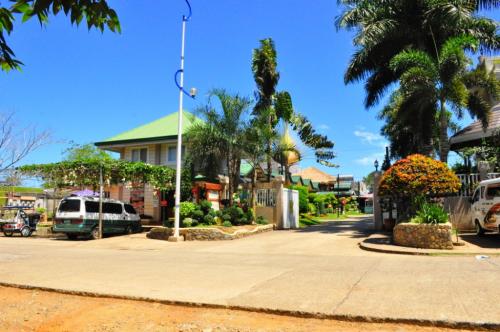Baliangao is a 5th class municipality in the province of Misamis Occidental, Philippines. According to the 2000 census, it has a population of 14,552 people in 3,255 households.
Cultural Development
According to the popular tradition of the place there was once a terribly heavy rainfall at the mountain areas overlooking Baliangao. This caused the overflow of water to the Dioyo River leading to the Murcielagus Bay. At that time fishes along the seashores of Baliangao were very abundant. Because of that unusually heavy flood the strong current to the Baliangao shores carried the fishes. The people collected the fishes by simply picking them up from the shores. The number of people in the area, however, was no match to the superabundance of the fishes along the shores, leaving excess uncollected left to rut for several days. The swarm of flies feasted in the area and as the days went by more and more flies were attracted, so that anyone, upon seeing the flies, could not help but exclaimed ”baling langaw!” which in English roughly means “how plenty are the flies”. Later on “baling langaw” was corrupted and made into “Baliangao”.
Another version of the origin of the term is also based on the presence of flies again because of the superabundance of the fishes in the area. Flies were all around particularly in the houses near the seashores so that non-residents of the place called them as “balay langaw“ (house of flies) which later on shortened to “Baliangao“
Whichever of the two versions may be closer to the truth, one thing is certain, that both were derived from the presence of many flies in the area caused by the overabundance of fishes.
It is not possible to ascertain accurately when Baliangao was really first settled. Knowledgeable sources, however, mentioned that aside from the Subanuns who were the original inhabitants, as in the rest of the towns in the province, the early settlers were said to be mostly criminals who escaped from the neighboring islands of Siquijor, Negros, Cebu, Bohol and other provinces of the Visayas, the place then being isolated and reachable only by sea travel.
On or about 1880 an exodus of immigrants from the nearby islands and provinces in the Visayas settled in Baliangao. Prominent among them was the Villanueva’s of Negros Oriental, the Buenos of Bais of the same province, the Barrica’s of Capiz, the Jumawan’s, Tenorio’s, and Subrado’s of Siquijor Island.
Baliangao was originally a part of Dapitan, of the Zamboanga Province. This must have been since the early 17th century during which time the Jesuit priest carried on the pioneering Christianization mission in Northwestern Mindanao.
GEOGRAPHICAL LOCATIONS
The Municipality of Baliangao is an interior town in the northern tip of the province of Misamis Occidental. Located 23 kilometers north of the capital city of Oroquieta, it also located 68 km to Dipolog City airport and to the seaport of Ozamis, Plaridel, and Pulawan, Dapitan City is 99 km, 26 km, and 60 km. respectively. It is part of the province of Misamis Occidental and considered as the most peaceful and hospitable municipality in the province. It is located within the geographic coordinates of parallel 8º34’ to 8º40’ north latitude and meridian 123º34’, 123º40’ east longitude. It is bounded on the North by Mindanao Sea, Murcielagus Bay on the West and South by the Municipalities of Sapang Dalaga, Calamba and on the East by the Municipality of Plaridel.
Baliangao is politically subdivided into 15 barangays.
* Del Pilar
* Landing
* Lumipac
* Lusot
* Mabini
* Magsaysay
* Misom
* Mitacas
* Naburos
* Northern Poblacion
* Punta Miray
* Punta Sulong
* Sinian
* Southern Poblacion
* Tugas
Source:
Wikipedia
Municipality of Baliangao
